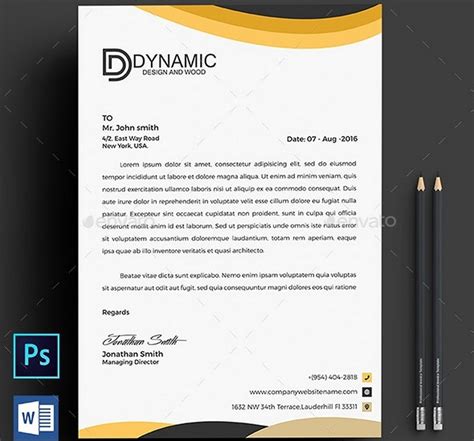Microsoft Word is a versatile tool that goes beyond basic document creation. One of its often overlooked features is the ability to create professional letterhead templates. Whether you’re a small business owner, a freelancer, or just someone who wants to add a touch of professionalism to their correspondence, having a well-designed letterhead can make a significant impact.
## Introduction
A letterhead serves as the top section of your official business or personal correspondence. It typically includes your company logo, contact information, and sometimes a tagline or slogan. When you send letters, invoices, or other documents, having a consistent and visually appealing letterhead reinforces your brand identity and establishes credibility.
Creating a letterhead template in Microsoft Word is straightforward. You can start from scratch or modify an existing template. Let’s explore how to design an effective letterhead using Microsoft Word.
### Designing Your Letterhead
1. **Company Logo and Contact Information**: Begin by inserting your company logo at the top of the page. Place it in the header section to ensure it appears on every page. Below the logo, include essential contact details such as your business name, address, phone number, and email address.
2. **Font and Typography**: Choose a clean and professional font for your letterhead. Avoid overly decorative fonts that may distract from the content. Stick to a consistent font style throughout the letterhead.
3. **Color Scheme**: Use colors that align with your brand. If your logo has specific colors, incorporate them into the letterhead. Remember that simplicity often works best.
4. **Whitespace and Alignment**: Arrange the elements neatly, leaving enough whitespace around each component. Proper alignment ensures a polished look.
5. **Tagline or Slogan**: If your business has a tagline or slogan, consider adding it below the contact information. It reinforces your brand message.
### Featured Image

## H2: Creating Your Own Letterhead Template
Now that we’ve covered the basics, let’s dive into creating your custom letterhead template. Follow these steps:
1. **Open Microsoft Word**: Launch Word and create a new blank document.
2. **Page Layout**: Go to the “Page Layout” tab and set the page size to match your desired letterhead dimensions (usually 8.5 x 11 inches).
3. **Insert Logo and Text**: Insert your logo and input your contact information. Use text boxes to organize the details neatly.
4. **Save as Template**: Once you’re satisfied with the design, save the document as a template (File > Save As > Word Template). This way, you can reuse it for future correspondence.
5. **Test Printing**: Before finalizing, print a test page to ensure everything looks as expected.
## H2: Common Questions About Letterhead Templates
1. What file format should I use for my logo?
For optimal quality, use high-resolution image formats like PNG or SVG. These formats maintain clarity even when resized.
2. Can I add a watermark to my letterhead?
Yes! You can insert a watermark (e.g., “Confidential” or “Draft”) to enhance the professional appearance of your letterhead.
3. How do I adjust margins for printing?
Access the “Margins” settings under “Page Layout.” Adjust them according to your printer’s requirements.
4. Should I include social media icons on my letterhead?
It’s optional. If your business actively uses social media, consider adding subtle icons with links to your profiles.
5. Can I create different letterheads for different purposes?
Absolutely! Save multiple templates for various scenarios (e.g., formal letters, invoices, or event invitations).
## Conclusion
Designing a professional letterhead template in Microsoft Word doesn’t require advanced design skills. With a little creativity and attention to detail, you can create a letterhead that leaves a lasting impression on recipients. Remember to keep it simple, consistent, and aligned with your brand identity.
